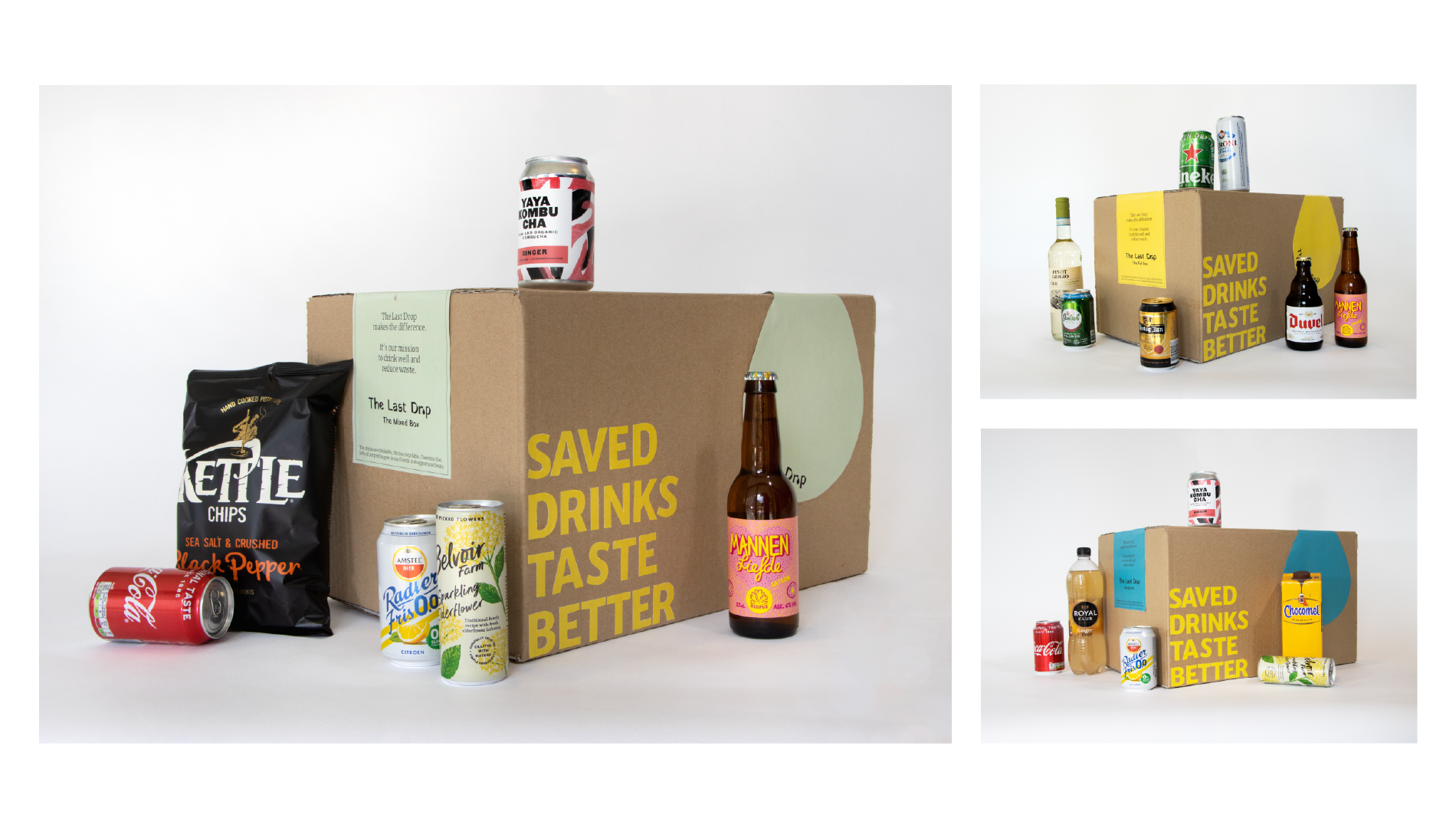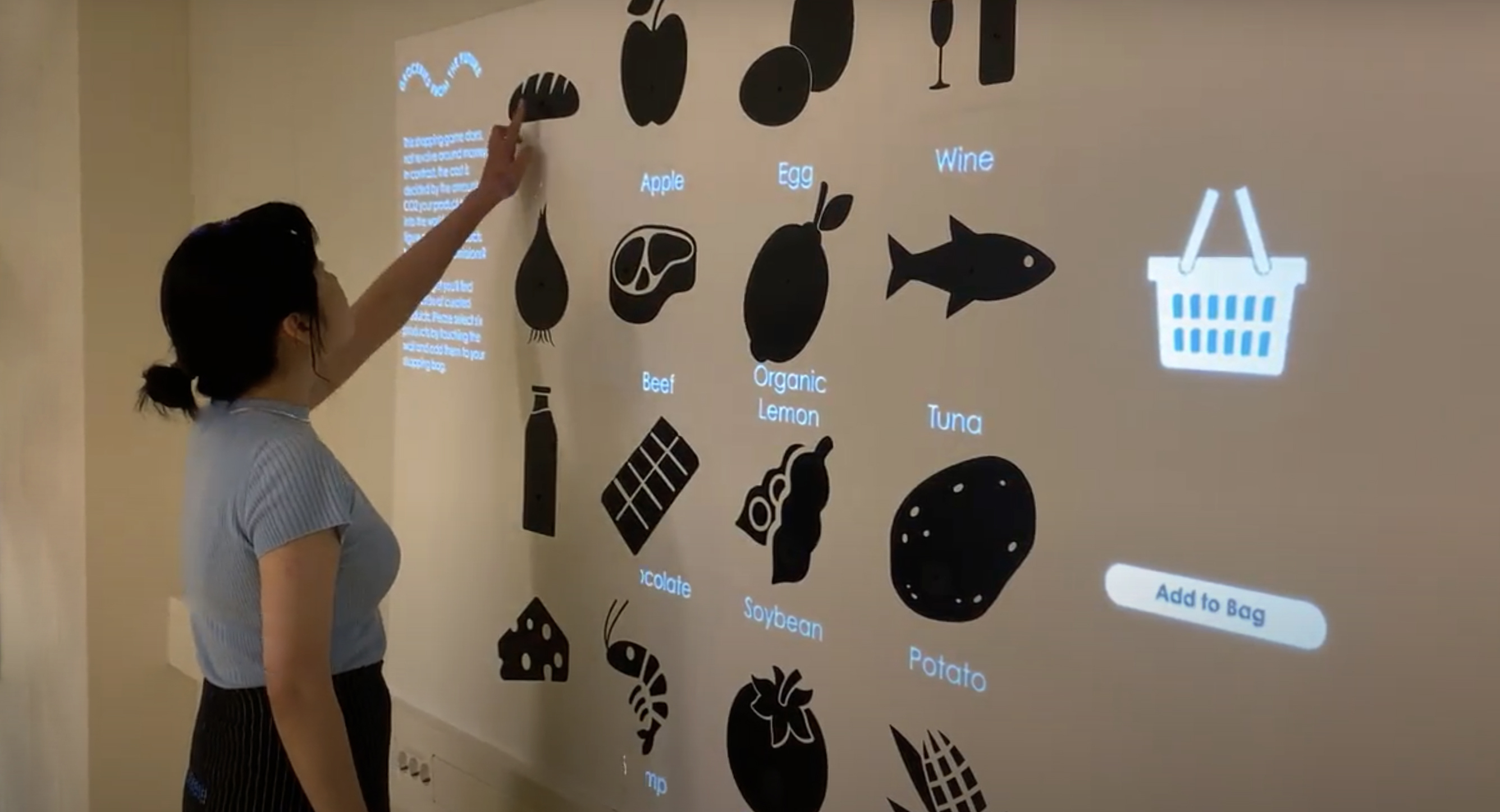
Untold
Audiovisual Storytelling around personal experiences of marginalization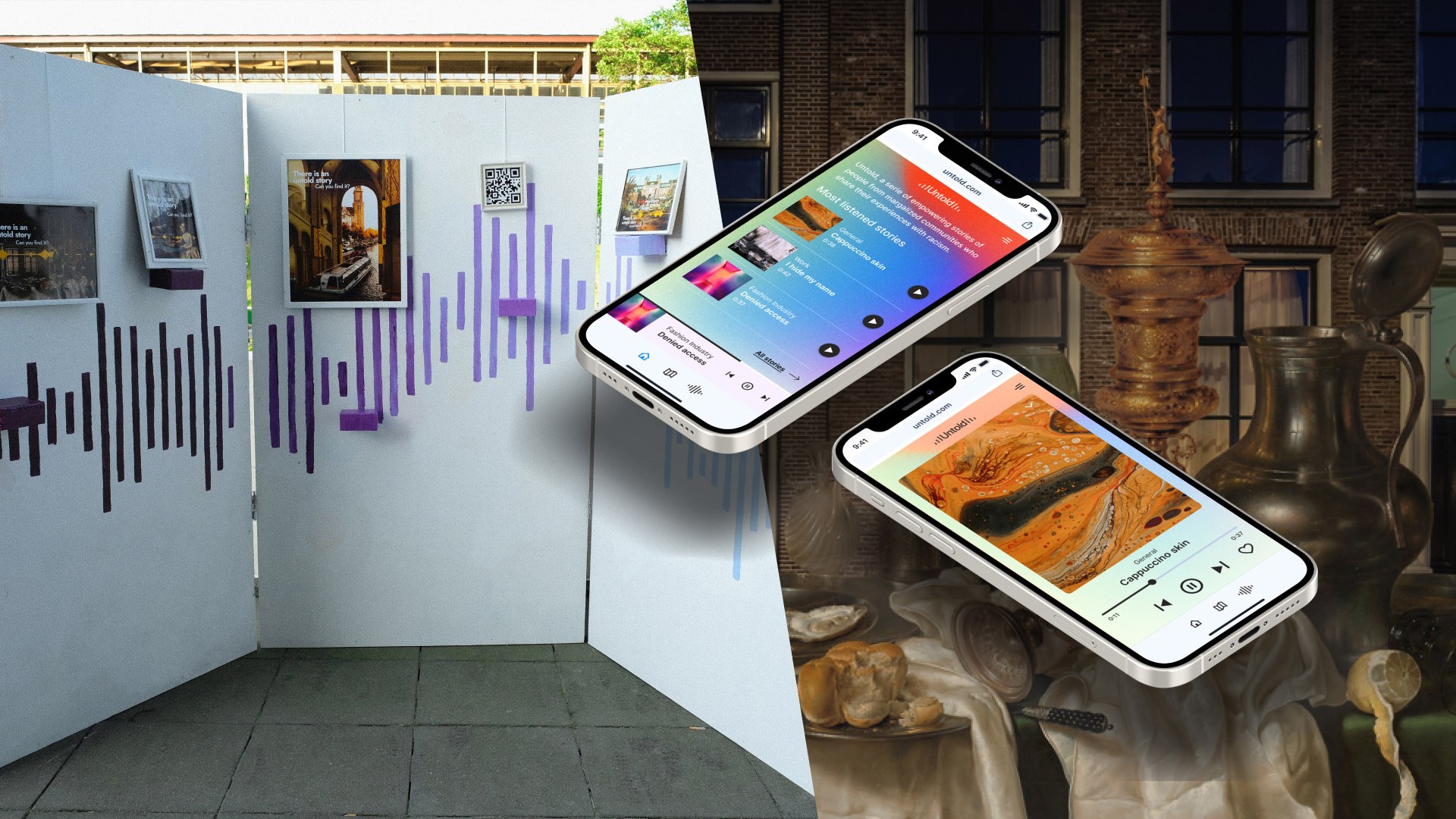
-
Client:
Rijksmuseum & Philips
- Team:
-
Disciplines:
Visual Design, Storytelling, Experience Design
-
Schoolyear:
2020-2021
In a society where racial discrimination maintains the status and power of privileged communities, talking about racism remains a challenge. The role The Netherlands played in the transatlantic slave trade and its enduring consequences in today’s society are often dismissed, denied or ignored. In the context of the Rijksmuseum’s exhibition on teh Dutch colonial past and slave trade, we looked into unveiling the ‘forgotten’ stories of the past and connecting them with current stories and experiences of racism and discrimination.
The Rijksmuseum has created an exhibition around the Dutch colonial slave trade, which details the narratives that have been lost to time. It exposes a darker history to what we perceive and often refer to as the Golden Age. While there has been much positive feedback, there are numerous instances of negative feedback. These responses come from a society where racial discrimination maintains the status and power of privileged communities. We see a regular and pervasive rejection of the topic of racism. This is a significant problem because we deny oppressed communities the chances to express their struggles and disempower them from pushing inclusive dialogue.
Younger generations are on the cusp of various social revolutions, and we want to provide the tools that allow everyone to be part of a global and intimate dialogue. Therefore, our focus is on young adults from the age of 18 to 30 years old, who will be involved in the process of creating this interactive experience.
First Steps
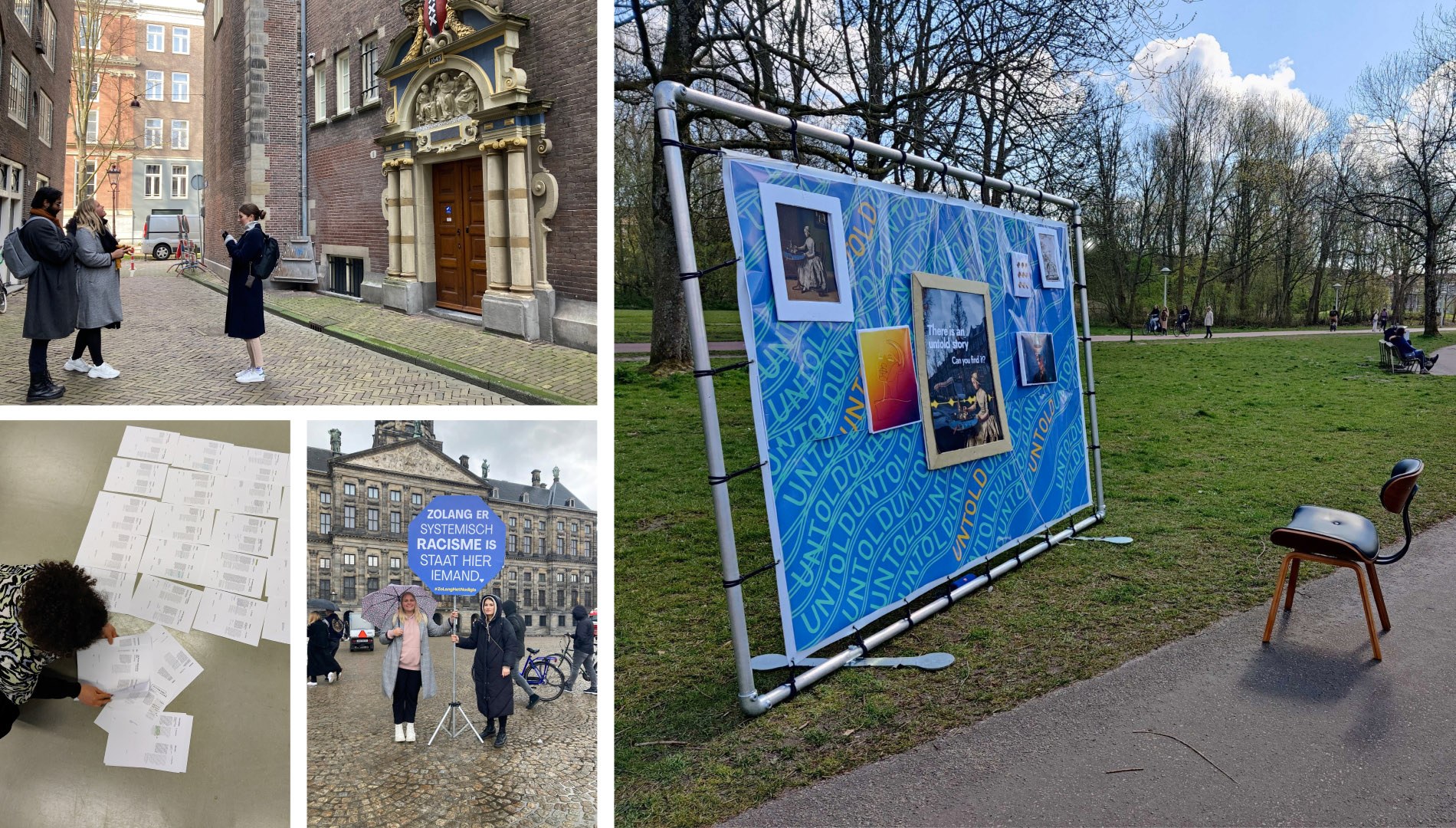
We began by situating ourselves in the centre of the dialogue, acknowledging our own relationship to the modern discourse of marginalization. We also looked at various forms of desk research, including TED Talks, academic journals, news articles, all describing the nature of this discourse in The Netherlands. We learned of numerous qualities of racial dialogue, namely of the denial of racial issues, and the centrality of the figure of Zwarte Piet (an aid to the Dutch Christmas figure of Saint Nicholas, who is portrayed with characteristics resembling enslaved black people) in the push for equity. This advocacy and political stances are heavily mobilized by various organizations, institutions and media outlets. This creates divisiveness and a lack of will towards changing stances and views. This helped us narrow our focus, as we decided to avoid topics around racial denial and specifically Zwarte Piet.
Facing a topic so hard to talk about
We developed some key insights through this process, namely, that discussing race is hard. Who knew? As people with a specific type of education, we have the privilege and access to language that makes it easier to discuss this than those who have had no contact with it. Yet, this doesn’t make discussing race a simple task, and there are some key features of this discourse that create safety.
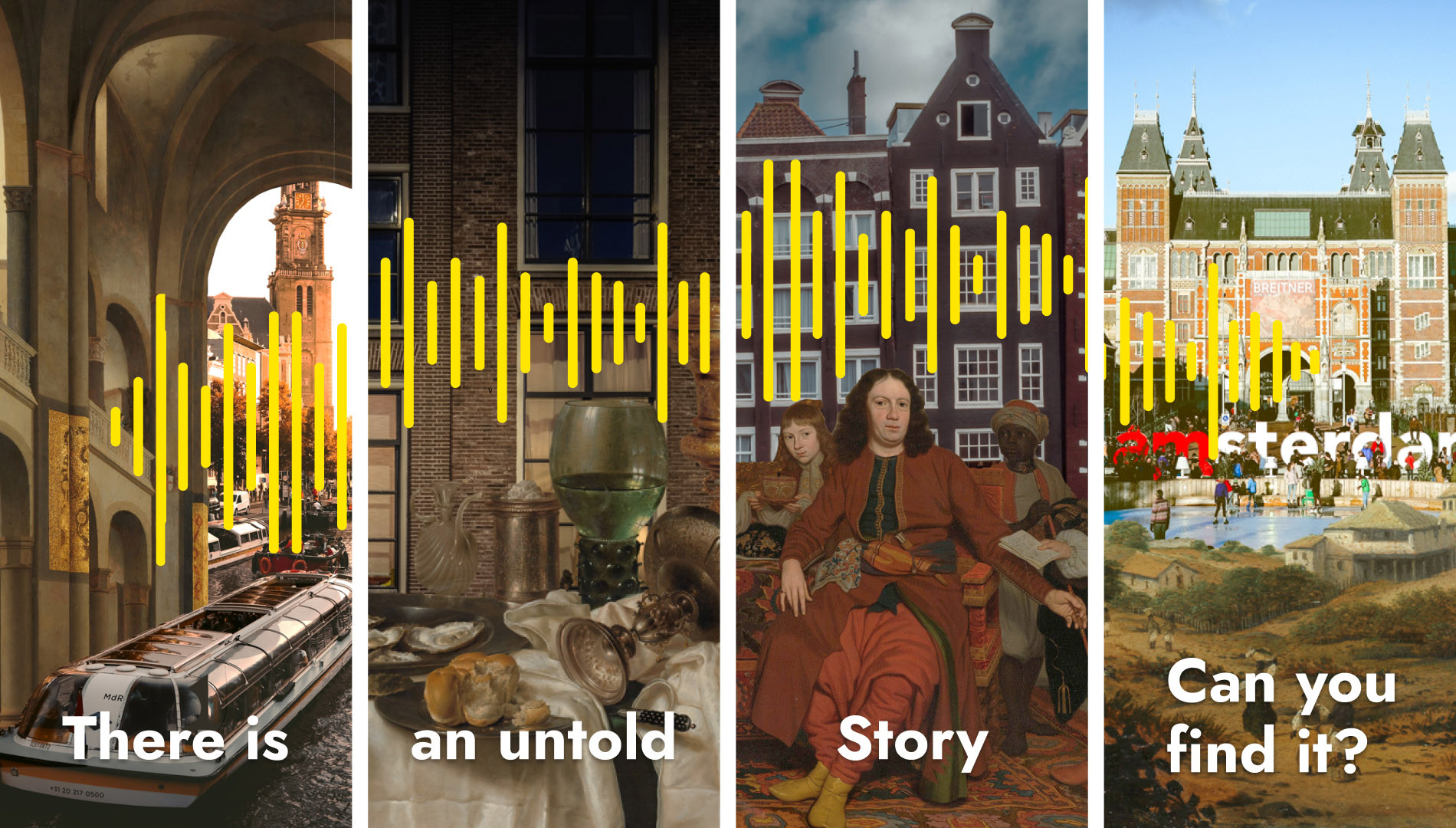
Often, privileged people looked to the stories and experiences of marginalized people as a starting point for dialogue: waiting and listening. This was empowering for people to become part of the conversation. Listening to people’s experiences and learning of their power to overcome is motivating. Our concept relies on storytelling and because it remains anonymous, we release the burden of representation from marginalized people, connecting them to others who could potentially emotionally exhaust the teller. Here we act as a moderator in a larger dialogue.
An interactive exhibition
To address this aspect of dialogue, we created an audiovisual experience which exhibits peoples’ relationship with marginalization as it relates to the works exhibited in the Rijksmuseum. Our idea was not only to connect to the two events (the museum’s exhibition and our experience) but as well to establishing that this problem is not only present today, but stems from a long standing history of oppression.
The tone of the work is significant, as it aims to empower tellers rather than victimize them. A solution to the problem of racism is collective, and begins with listening.
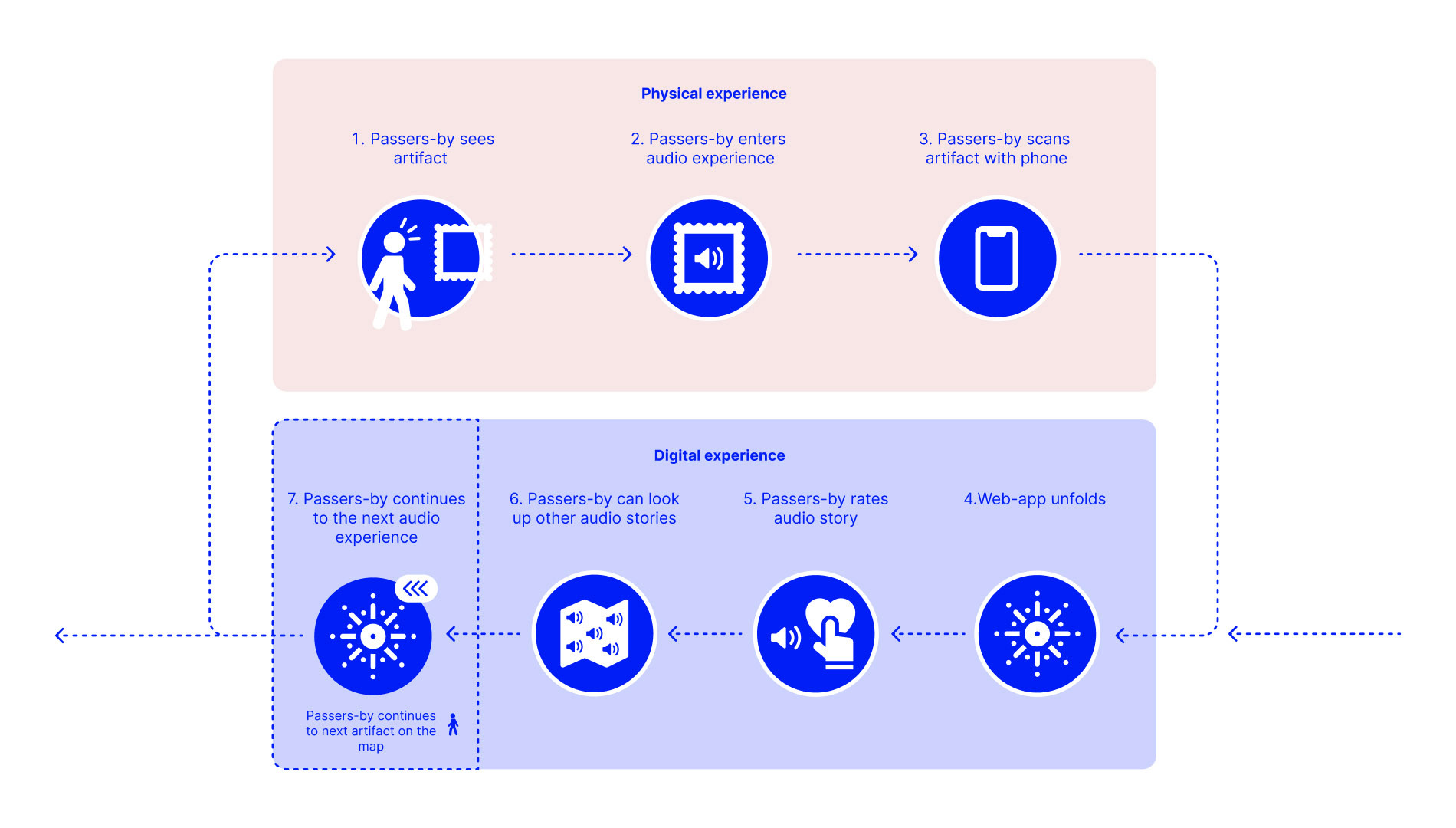
Our project comprises two distinct parts, a public installation where we exhibit the stories we collect, engaging an audience that would otherwise avoid museums, and a virtual database that holds all of these stories which can be accessed at any time and from any place for further engagement.
Next, we hope to take our interactive audio-storytelling experience further. As the topic can be applied to several sectors, we hope to collaborate with more stakeholders in the future to connect their events and projects with relevant stories to expose how the problem lies all around us, not only in specific sectors.
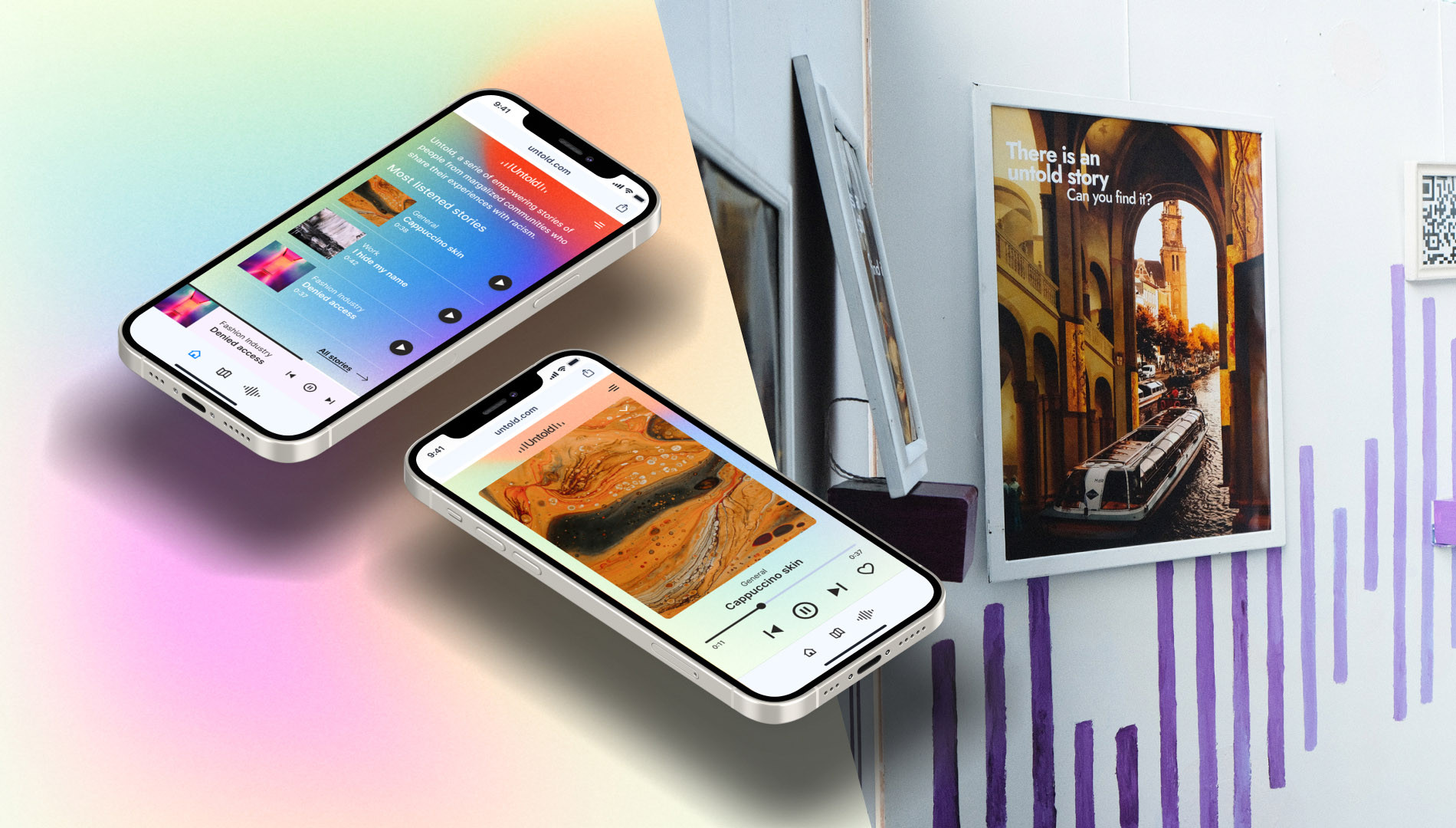
Watch the video about the exhibition Untold
